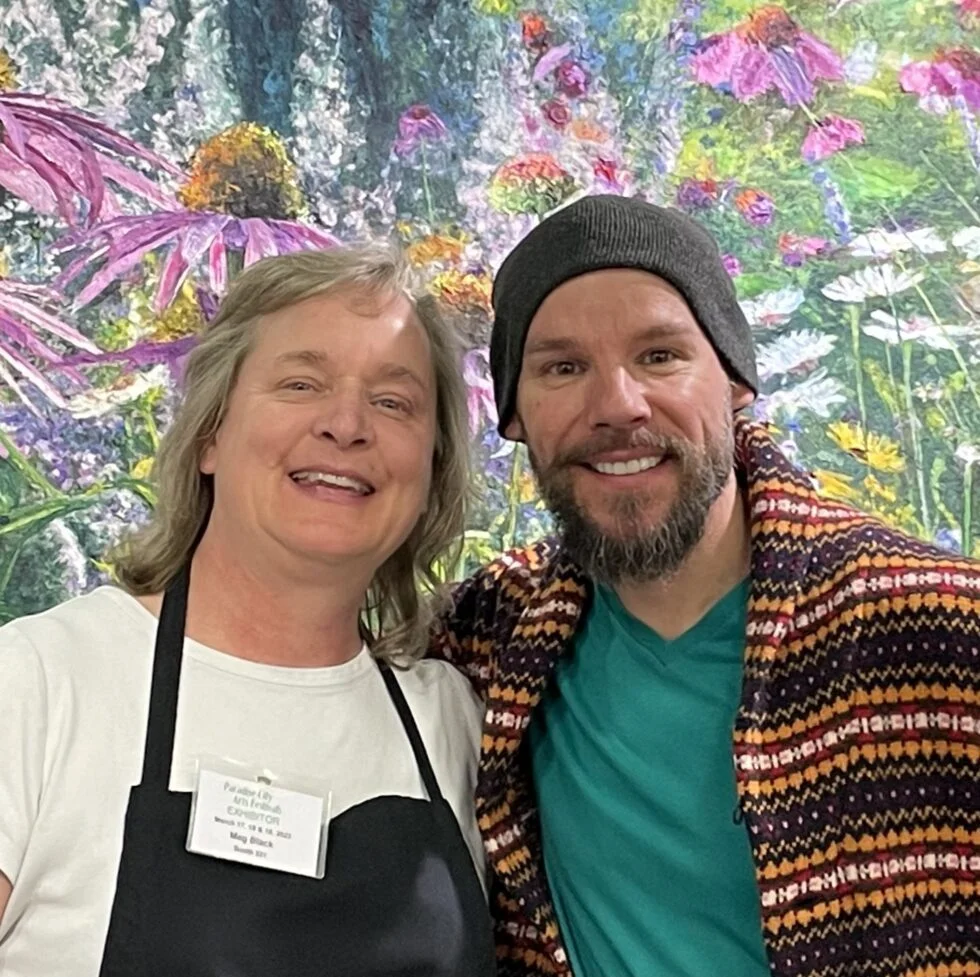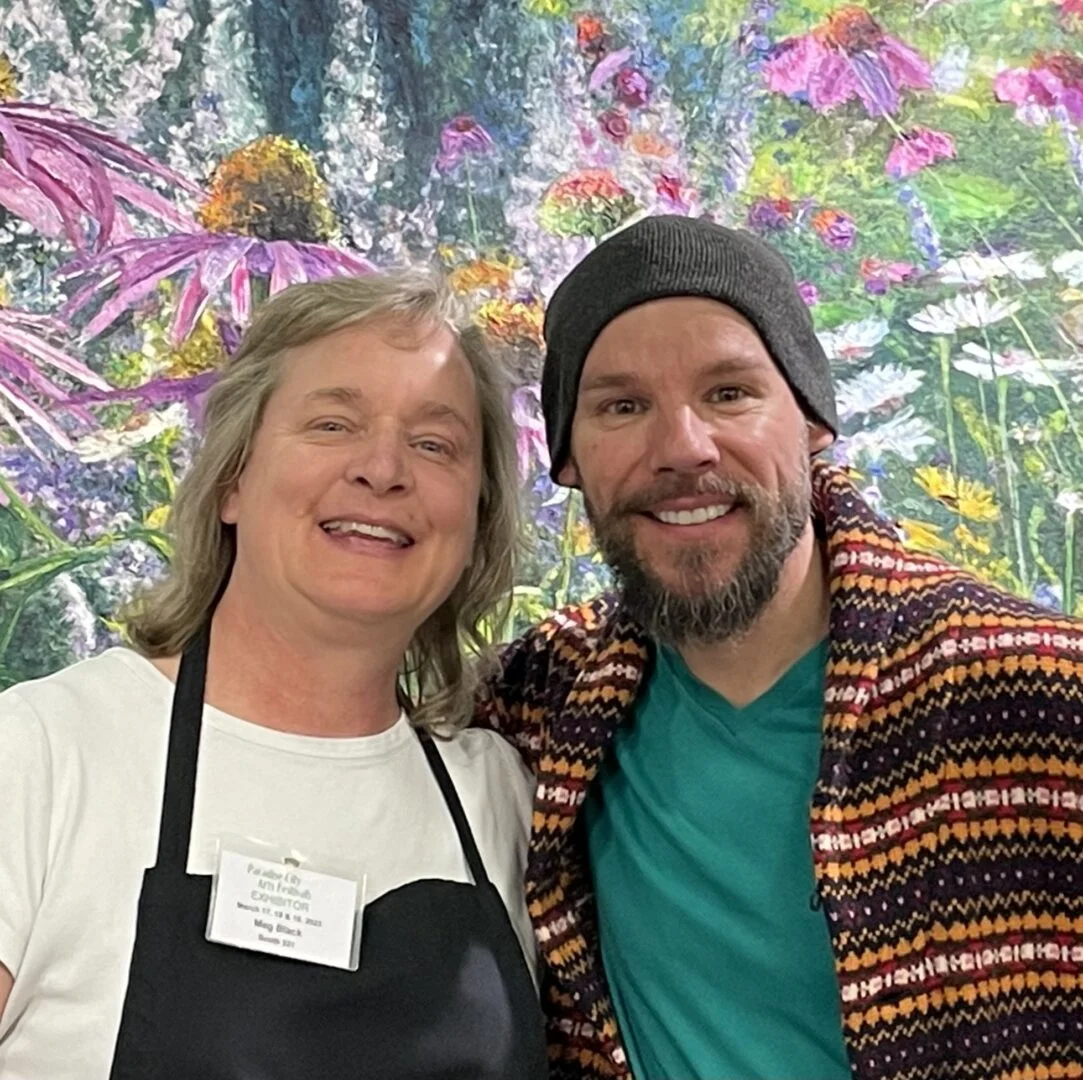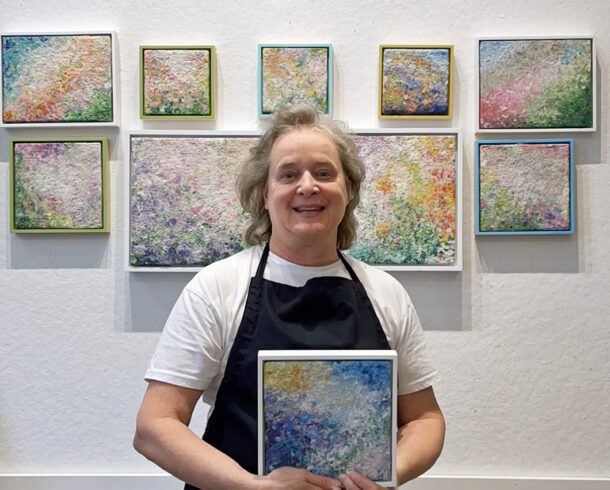Coneflowers II, (2021). 40 x 40 x 4 inches. Mixed media painting (cotton, abaca, acrylic paint, pigment). Private collection.
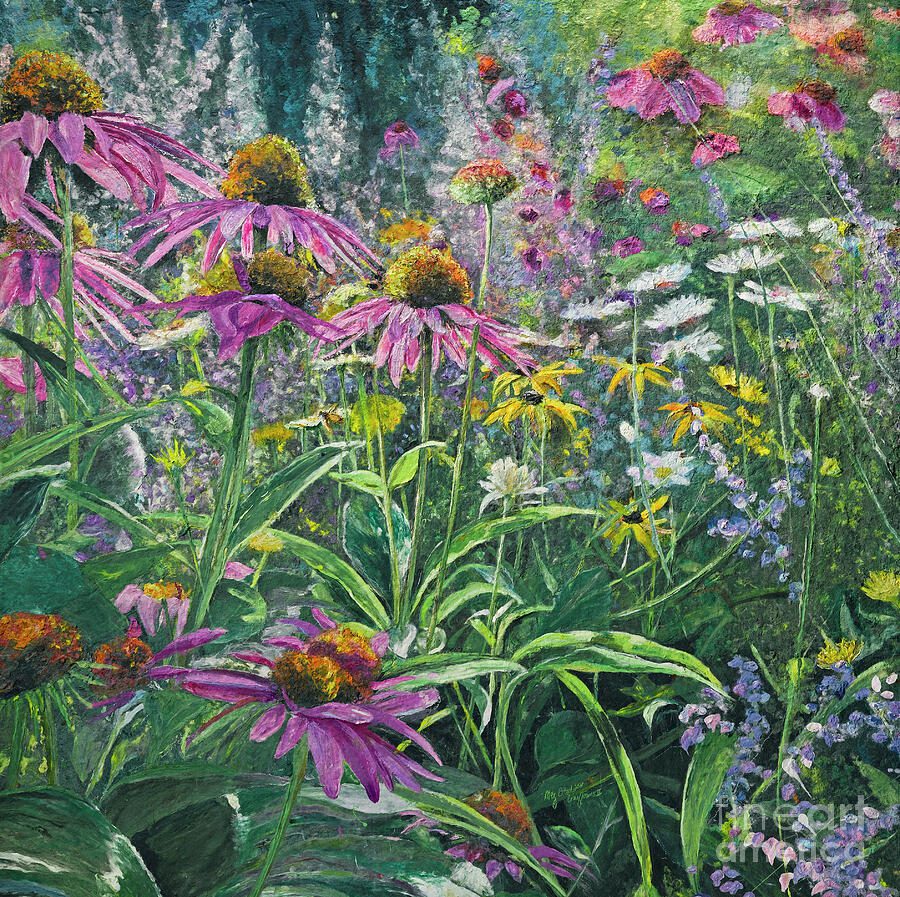
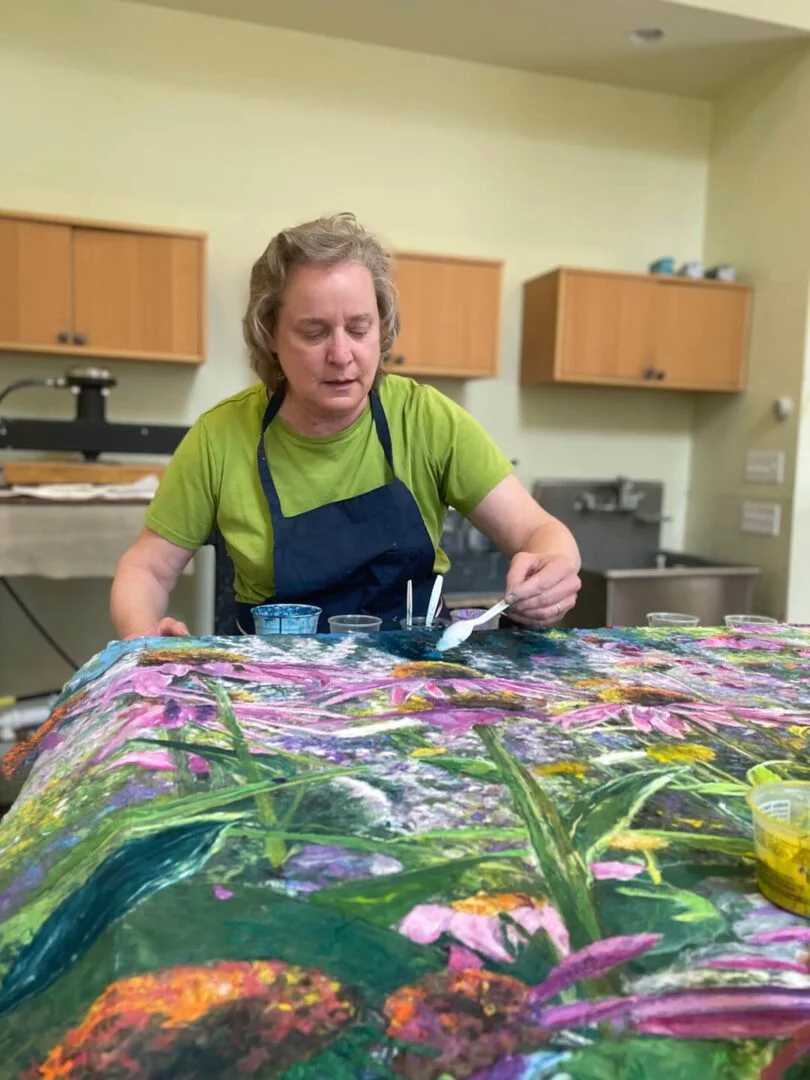
Working on Coneflowers II, July 2021.
This painting was inspired by a tiny garden just down the street from my studio. The garden is tenderly cared for by a local garden club, who make sure it is bright and colorful all season long. Every summer morning before it gets too hot, I ride my bike along the path next to the garden. One day I decided to take a closer look where I discovered colors, shapes, and textures way beyond what I saw as I rode by on my bike.
The experience reminded me of Virginia Wolfe’s short story “Kew Gardens” which features a snail as one of the main characters inching is way along the garden as people stroll by without noticing the life teeming inside this miniature world. So, I took photos and made sketches of this lovely garden that so many of us drive by every day.
The island garden, while much smaller and far less grand than Kew Gardens, features coneflowers, Shasta daisies, Russian sage, and black-eyed Susan’s. To my delight, when I reviewed the photographs looking for the one that would inspire my painting, I noticed a bumblebee buzzing among the flowers. Not quite Virginia Wolfe’s snail, but this tiny creature will now play a prominent role in my painting.
Coneflowers II, installed in the U.S. Embassy, Kuwait.
I received a call from the U.S. State Department Art in Embassies director. The U.S. Ambassador to Kuwait would like to loan my Coneflowers painting to exhibit in the main entrance of the residence. To the left is a photo of the painting in the entrance to the embassy. The painting is in a private collection; I am grateful to the owner for agreeing to the loan.
I cannot tell you how honored I am to have my painting seen by diplomats, foreign officials, and visitors to the US embassy from all corners of the world.
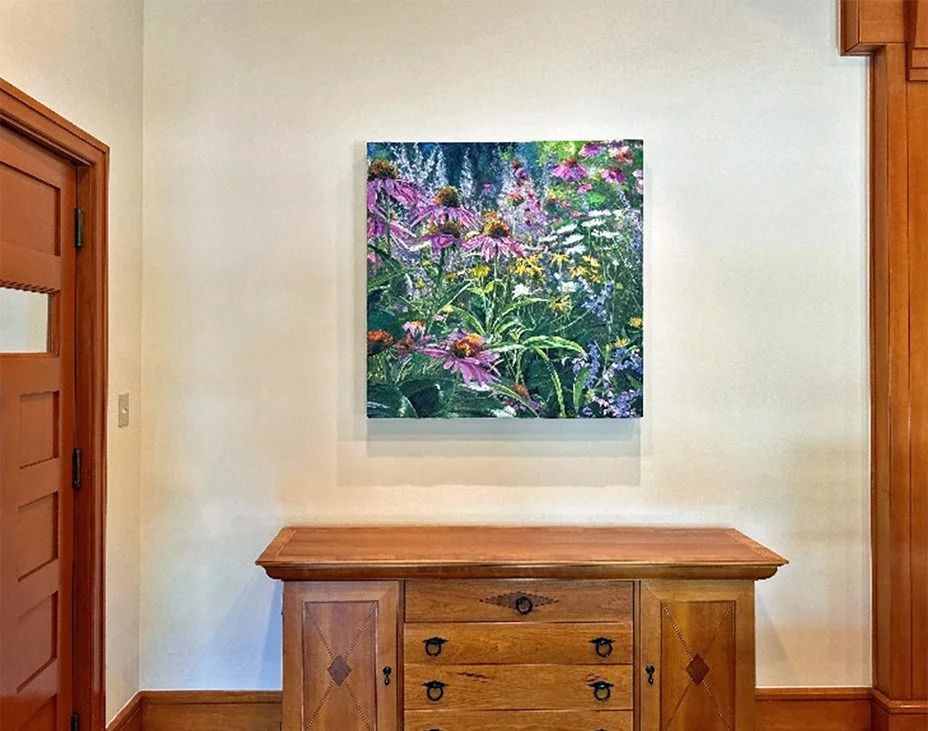
This short video shows the pulp painting process I used to create Summer’s End.
Here I am working on my coneflowers painting, applying wet pulp to the denim blue area around the coneflowers.
Using a spoon to layer the pulp onto the surface, I build layers upon layer until I get the desired result of an almost 3-D surface. . I am using cotton pulp pigmented with non-fading pigments. The cotton has a natural texture that mimics the textures of the landscape.
The pulp has been beaten in my Hollander Beater for up to 3 hours, giving the medium a silky quality that flows smoothly and holds the pigment beautifully, giving the final work a vibrant surface.
When dry, the cotton fiber will maintain its textured quality, giving the painting an almost 3-D effect that recreates the appearance of the garden in bloom.
Testimonials
Commission Inquiry
With the collector at Paradise City Arts Festival.
The collector visited the arts festival without having seen the painting in advance. He told me he first saw it from a distance and it “took my breath away. “I walked around the festival a few times but couldn’t get it out of my mind”, he added.
Ultimately, he returned to my booth and purchased the painting. I am so grateful to him for loaning it to the State Department so it can be shared with the dignitaries and visitors to the U.S. Embassy for the next three years.
